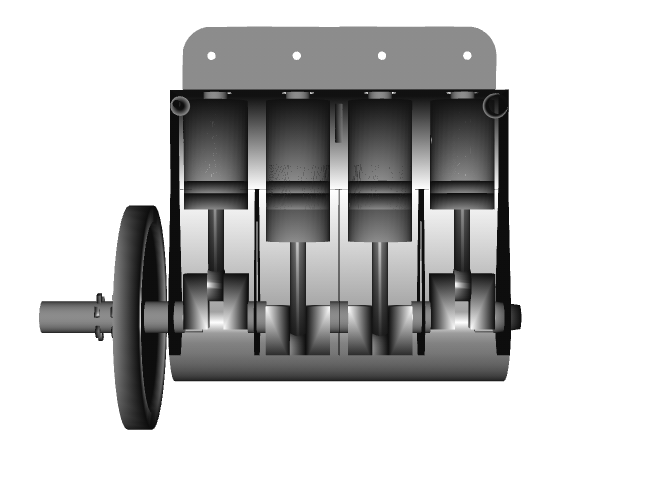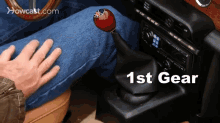A Driving Manual
I enrolled in driving school 3 months ago and I passed. I know what I have written won't be useful to a lot of people but I am writing about driving a manual car for newbies because I remember how terrified I was. Looking back, I was probably too terrified than needed. In 3 months, I have also encountered tales from people who hold a license about some others, stating that not everyone who holds a license knows how to drive. This was newsflash to me.
My thoughts about including a driving manual on my blog to educate others to the best of my knowledge, made me giggle, since it is pretty tangent to my content. Since, I write about any topic under the sun, it seems fair to include it in. I suppose it might be obvious that I am no expert, but I am pretty confident about what I have written because it worked for me. I remember one month into driving lessons, my trainer was barely saying anything and I coursed through a congested traffic road pretty well. So, I'd say my experience is solid knowledge.
Manual cars have one extra pedal than what might seem necessary and this is probably what is the source of confusion. Here is what you need to know:
A manual car with a stick shift has 3 pedals: clutch, brake and accelerator, all situated in the order of writing. Here is what you need to know: the clutch controls the speed of piston movement inside the engine, the brake stops/decelerates the car and the accelerator accelerates the car. Your job as a driver is to hold on to the clutch with your left foot and the other two with your right.
Clutch, Brake and Accelerator
The idea behind clutch, brake, accelerator
I understand that for a newbie, the importance of a clutch might still seem confusing and thus to make things easier to understand, imagine that the engine part of the car and the wheels have been pulled out of a car and placed in front of you. Also imagine that in this hypothetical situation, all of those car parts still run and move when you press the pedals on the car. When you press the clutch and just the clutch, what you are essentially doing is controlling the speed of the up and down movements. The harder the force on this pedal, the slower the movements and vice versa. This means, to accelerate; which you can only do by pressing the accelerator; you would also, as a pre-condition, need to let go of the clutch as much as you can.
If it wasn't obvious by now, this means that when you want to decelerate, you'd have to, as a pre-condition, press down on the clutch to slow the movement of the piston to press on the brakes to decelerate or stop.
The use of gears
I suppose most cars with manual stick shift have 5 gears for forward movement and one reverse gear. What I think is important for a newbie to know is that all 5 gears have their specific speed range. This is true in cars with automatic gears as well, only that the driver doesn't have to manually shift it.
Since I am still pretty new to driving, I haven't had the opportunity to notice the exact numbers of every range, however, I can give you a rough idea of approximation.
If you ever start a car from a full stop, you will need to start at first gear or it will be practically impossible to move forward, I promise you. The first gear is a snail-speed movement. This is why, when you have moved a few metres ahead, switch to second. The second is faster than the first gear and suitable if you are driving on a lane that has cars situated at a distance of 2 metres away from you and the traffic is moving. You can shift gears higher when you see the distance between the cars neighbouring you, expanding.
How to drive forward
Despite my instructions, I, like everybody, would tell you to get an experienced driver with you on the side.
But here is how both the hands and the feet are combined in action.
Before you turn your car on with the key, you need to check. Is the stick shift in the middle? If not, you'll have to press down on the clutch before you even turn the car on with the key. You'll need to press down on the knob on the hand brake and push it down.
Still pressed down on the clutch, if the stick shift is in the middle, which is called neutral, the stick shift is brought to the left edge of the box and then slid down on the front side. That puts you in the first gear. You'll need to let go of the clutch very slowly and press on the accelerator with similar strength. I hope you remember that the car will still move at a max speed of a snail no matter how hard you press on the accelerator because of the pre-determined speed ranges.
Image Source: Giphy
When it feels appropriate, you can press down on the clutch again (this slows down the car because it is slowing down the pistons) and bring the stick shift straight back to the opposite edge of the box. This brings us to the 2nd gear. I recommend you leave and let go of the clutch as slowly as you would in the first gear, but I've noticed that some cars are forgiving in this area. Accelerate if needed.
Image Source: Tenor
Changing cars into a different gear always requires pressing down on the clutch. I think you'd break the stick shift if you tried to move it on its own.
Changing from the gear levels situated on the lower side to the upper ones or changing from gear levels from side to side say gear 2 to gear 4 would importantly, need you to bring the stick shift in the neutral position first. There is a certain way of doing it and is tricky to explain with just words. You'll need to slide it back in a neutral position the same way you would have slid had you had to shift to that gear from the neutral position. Whoever sits by your side during training would show you how to do that. (I couldn't find any gifs for the same.)
I've written ways to accelerate but haven't briefed on braking yet. If the car is in speed and needs to decelerate quickly, you'll have to; as I've explained in the previous section; while pressing on the clutch first, brake as much as you need to or bring the car to a full stop. I'll give you a cheat sheet that everybody learns eventually through practice. As you are decelerating, since you'd be holding down on the clutch already, use the deceleration time to shift the gear back to one again. That gives us 2 advantages.
One, if you bring the car to a full stop, no matter what gear you are on, you'll have to switch back to first gear anyway to start again. Doing this while decelerating will save you time in traffic.
Second, if you don't come to a full stop, often; when you aren't experienced; you run into the risk of stopping your car mid-traffic. Don't understand why? To get back up in motion again, you'll need to let go of the clutch. With manual cars, I've noticed, that the switch back in motion from a brief stopping (on a higher gear) is difficult and the car automatically shuts down. This is pretty normal and to start again all you'd need to do is to set the stick shift in the first gear again; since the car came to an involuntary full stop. However, this takes more time than the trick I mentioned before, and doing what I said saves your and everyone's time on the road.
How to drive reverse?
To drive reverse, the stick shift needs to be in the place the ball of the stick shift projects as 'R'. This usually happens to be the rightmost corner of the box. Switch to neutral, slide to the rightest edge and force it to the back. These are the instructions for reverse. You'll need to turn your head back to see the road behind you and let go of the clutch to move. I don't think I've ever accelerated during reversing yet, but if you need to, you'll have to let go of the clutch press and then press the accelerator. Brake as you would if you were moving forward. The clutch comes first and the brake pedal right after.
I could have never covered everything here even if I wanted to and I know I have left a lot of things behind. I think driving is a practical experience and one can learn it only by doing it and failing many times. The latter experience is why you need an experienced driver on the side.
By no means is this manual perfect, but if you wanted to get a headstart, here you go. Another reason for me to write this down was because I was afraid I'd forget my lessons.
Author's note:- I am not sure when the next post will be posted. It is possible it might take a long time. I am burnt out.








Comments
Post a Comment